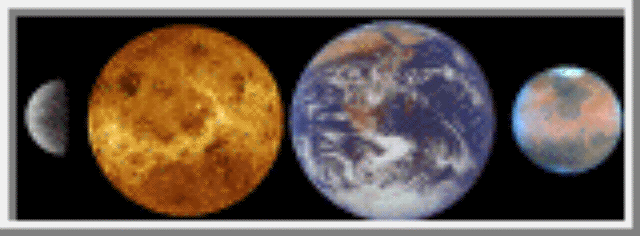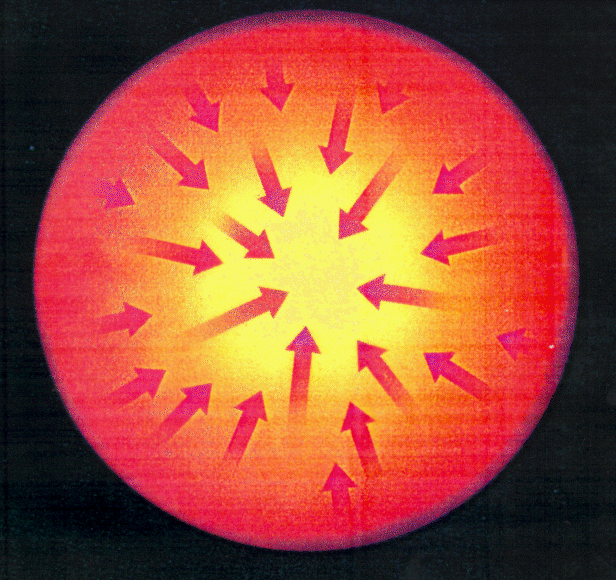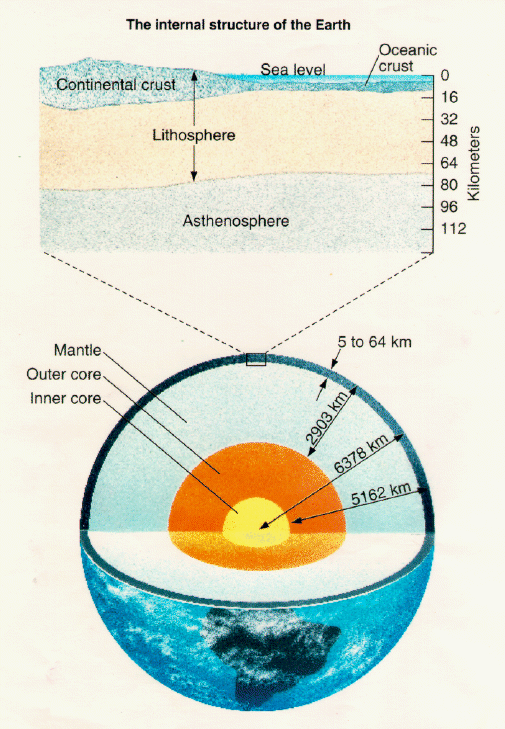
 Beware. Still under construction.
Beware. Still under construction.

 > 2.5 grams per cubic centimeter (cc) and a
diameter
> 2,000 kilometers. This definition is rather loose and
the Terrestrial planets include the objects
Mercury
,
Venus
,
Earth
,
the Moon
,
Mars
,
and the Galilean moons Io, and Europa.
> 2.5 grams per cubic centimeter (cc) and a
diameter
> 2,000 kilometers. This definition is rather loose and
the Terrestrial planets include the objects
Mercury
,
Venus
,
Earth
,
the Moon
,
Mars
,
and the Galilean moons Io, and Europa.
Properties of the Terrestrial Planets

INTERIORS OF THE TERRESTRIAL PLANETS
We will discuss the evolution of the Earth and the Moon because these two objects should bracket the types of possible behavior (the Earth is the most massive Terrestrial planet and the Moon is about the least massive object) and also because these objects are the two most well-studied objects.
Before I discuss the structure and evolution of the Earth and the Moon, let me say a few words about why we believe we know things about the interiors of the planets. This is an interesting exercise, because, after all, we have not probed the interiors of the planets directly (e.g., by drilling holes directly into the Earth or Moon. At most, mines reach a kilometer or two beneath the surface of the Earth while the radius of the Earth is over 6,000 kilometers). Most everything we know has been learned through indirect means.
Probes of the Interiors of Planets
EVOLUTION

The Terrestrial planets formed through the coalescence of the small solid particles into planetesimals and then through the accretion of the planetesimals into planet-sized objects. This process led to the formation of initially homogeneous objects, that is, objects where the chemical elements were mixed together. Subsequently, the interiors of the planets melted (or at least become soft) through:
The addition of heat via accretion and the decay of radioactive nuclei was able to either fully melt the interiors of the planets or to at least make the material soft. In either event, chemical differentiation was able to take place.
Chemical differentiation is easy to understand as it happens because dense material sinks while light material rises.

For the Earth, this means that the denser elements such as the iron and nickel sink to the center of the while the less dense materials like the silicates rise (float) to the surface. This leads to the three-layered structure for our planet (where the layers are defined by the chemical composition of the material).
